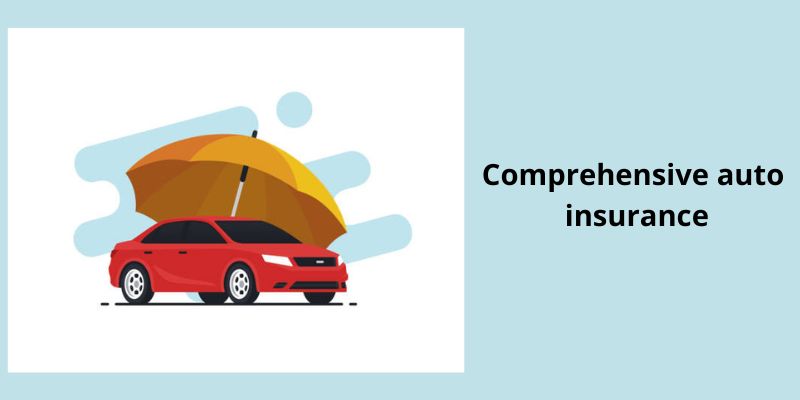Comprehensive auto insurance covers damage to your vehicle from events other than collisions. Comprehensive auto insurance will cover your vehicle, among other things, in the event that it is crushed by a collapsing garage, broken into, dented by a deer, or spray-painted by a vandal. carism.info will provide some of information for you in this post.
Understanding Comprehensive Insurance

Comprehensive auto insurance, collision insurance, and liability insurance are the three components of an auto insurance policy. In most places, having liability insurance is required by law, however if a person owns a car outright, collision and Comprehensive auto insurance are not. According to the issuer of the auto loan, a person who has financed their vehicle can require comprehensive insurance.
Cost of Comprehensive Insurance
Comprehensive auto insurance damage to your car resulting from mishaps and catastrophes other than auto accidents. According to the Insurance Information Institute, comprehensive insurance typically costs about $134 per year.
Insurance.com calculates the cost to be $192, however this depends on the state in which you live. In any event, the monthly premium for comprehensive car insurance would be less than $200.
A motorist can select a different deductible for collision and comprehensive insurance depending on the anticipated risk levels in each of these categories (liability insurance has no deductible).
A reasonably large $1,000 deductible could be chosen to reduce the costs if someone believes they won’t need Comprehensive auto insurance but doesn’t want to do without it entirely. A comprehensive insurance policy will cost more the higher the monetary worth of a car.
You can anticipate what you could pay for comprehensive coverage by being aware of how insurance companies classify drivers’ risk levels. The cost of your auto insurance, including comprehensive coverage, can be influenced by your location, driving history, and the quantity of coverage you choose.
For instance, Louisiana has the highest annual average cost for full coverage auto insurance at $1,545 per driver. Compared to other states, North Dakota has the lowest average annual premium for auto insurance at $686.
Advantages and Disadvantages of Comprehensive Insurance

With this insurance, you can rest assured that you won’t be responsible for any costs if a tree falls on your vehicle or a thief takes your catalytic converter.
There are disadvantages. Accidental damage is not covered by Comprehensive auto insurance. Additionally, the cost could be substantial if you purchase comprehensive insurance in addition to collision insurance. If your automobile is older and paid off, you might be able to save money by choosing not to buy comprehensive coverage, especially if theft and weather-related disasters are not a concern where you live.
Pros
- Comprehensive coverage provides protection against theft, weather-related incidents, and other critical things outside of your control.
- Comprehensive insurance frequently pays for “unforeseen events” like break-ins or hail-damaged windshield wipers.
- Comprehensive insurance will cover any losses brought on by thefts or break-ins if you have a new automobile and live in a high-crime area.
Cons
- Damage brought on by an accident is not covered by Comprehensive auto insurance.
- An older vehicle with a high mileage may not require it.
- Anything taken from your car that is personal is not covered by comprehensive insurance.
- Pothole-related damage is not covered by it.
Example of Comprehensive Insurance
Comprehensive insurance acts in the same way as any other type of auto insurance should you need to file a claim. However, if you’ve never had to, knowing what to expect from an example will help you prepare. Here is an example of how comprehensive insurance works in the case of a driver filing an auto damage claim.
Think about a Honda Accord owner who has a $1,000 comprehensive deductible on a $10,000 car. If a tornado totals the car, the insurance company will pay the driver $9,000 for it.
The collision and liability components of the insurance policy won’t pay for the damage if they don’t have comprehensive coverage and a tornado obliterates their car.
The entire $10,000 loss will be the driver’s responsibility. If a motorist doesn’t have $10,000 to spend on a comparable replacement, they may have to take out a loan to buy a replacement car or settle for something less expensive.
An illustration of comprehensive insurance in use can help put its potential value in the event that your car is destroyed into perspective. Knowing how much it would cost you to repair damages out of pocket is useful if you’re leaning more toward the “when to drop comprehensive insurance” camp.
How Does Comprehensive Insurance Work?

Comprehensive coverage, like other types of auto insurance, covers a portion of the loss if your automobile is damaged. The “deductible” is a portion of the price that the car owner will also be responsible for paying. Repairs or the purchase of a new car may be covered by the insurance payment.
What Does Comprehensive Auto Insurance Cover?
Any damage to an automobile, excluding damage from a collision, is covered by comprehensive auto insurance. In addition to fire, weather, natural catastrophes, theft, and acts of vandalism, this category also includes natural risks like deer hits and falling limbs. However, it excludes coverage for injuries to passengers or other people as well as damage brought on by collisions with other vehicles.
Conclusion
You might believe that your risk of non-collision damage is low if you have fully paid for your car, are unable to afford comprehensive insurance, or drive an outdated car with little value. You might decide not to purchase comprehensive insurance in this situation. You could also opt not to buy comprehensive insurance if you prefer to self-insure.
But keep in mind that if your automobile is damaged, skipping comprehensive coverage could result in a hefty repair price. Therefore, consider the expenses of any potential repairs in comparison to any premiums or deductibles you may have to pay to keep comprehensive coverage.